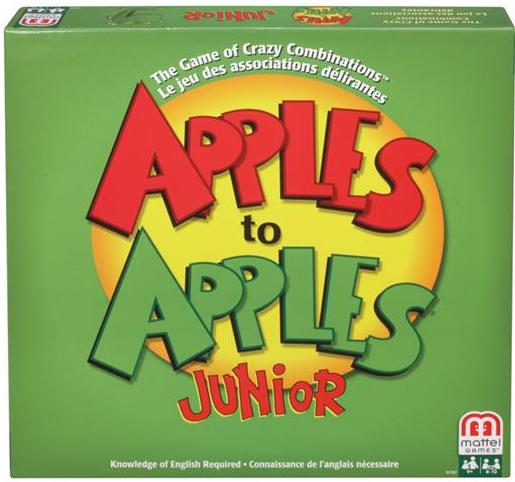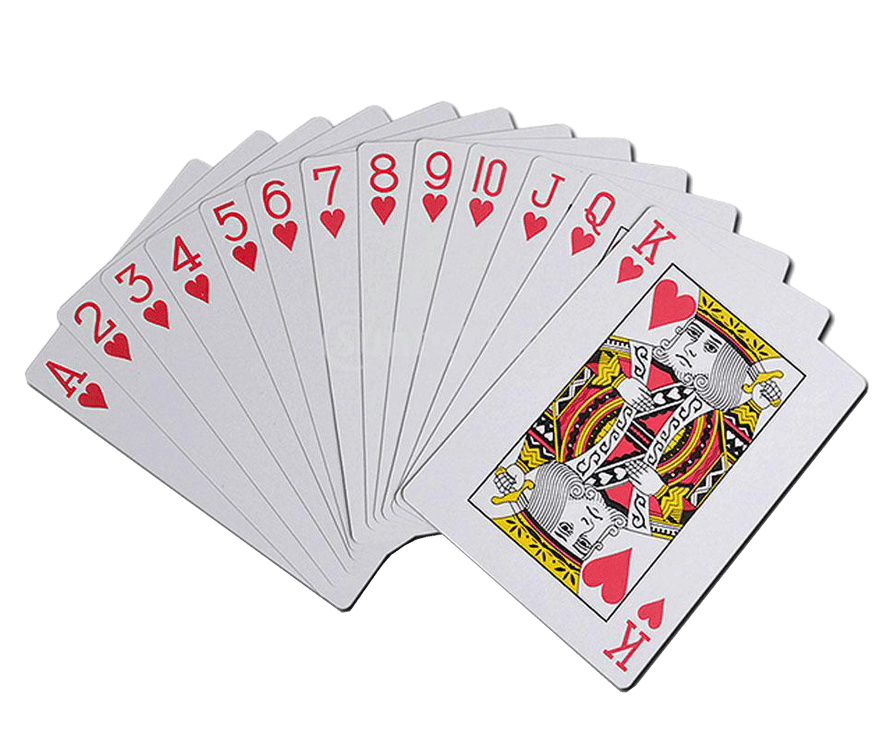Apples to Apple Junior™ - designed for middle-school aged children 9 and up
By Pegasus Spiele, Out of the Box Publishing, and Mattel
Apples to Apple Junior™

- Developer: Matthew Kirby & Mark Alan Osterhaus
- Artist: John Kovalic
- Publisher: Pegasus Spiele, Out of the Box Publishing, and Mattel
- Release Date: 2002
- Players: 4 − 10
- Ages: 9 and up
Information
Apples to Apples Junior™ is designed and optimized for middle-school aged children 9 and up, although older children and adults find it hilarious and entertaining to play with their younger children.
Compared to the original game, this edition features simplified words that even young children can understand and has no suggestive words that adults would be uncomfortable explaining to the kids.
Players will have a blast making crazy comparisons while expanding their vocabulary, speaking and thinking skills at the same time. 576 unique cards ensure maximum inventiveness, so each round is filled with surprising comparisons from a wide range of people, places, things and events.
Out of the Box changed the name of this game in 2007 from Apples to Apples Junior 9+ to Apples to Apples Junior. The Junior 9+ edition was originally sold in a small (288-card) box. It was changed to a bigger (576-card) box when the name was changed to Junior.
Note: Apples to Apples Kids was formerly called Apples to Apples Junior!, but was changed to Apples to Apples Kids when Apples to Apples Junior 9+ was changed to Apples to Apples Junior.
How to Play
Players take turns being judge and dealer. The judge deals seven Red Apple cards to each player. On each of the Red Apple cards is printed a noun or noun phrase, or possibly a gerund (gerund | ˈjerənd | noun Grammar. A form that is derived from a verb but that functions as a noun, in English ending in -ing, e.g., asking in do you mind my asking you?).
The judge then plays one Green Apple card that features a one-word characteristic, such as crunchy, smelly, or excellent and places it face-up on the table for everybody to see. The other players select a card from their Red Cards they think best describes the judge’s Green Card, such as pickles, monkeys, or flip-flops and places it face-down
When everyone’s Red Apple cards are on the table, the judge shuffles the Red Apple cards, reads them (often aloud), and decides which noun is the best match for the adjective. This decision is subjective; the official rules encourage the judge to pick the match that is “most creative, humorous or interesting.”
Depending on the group of players, part of the game play is trying to convince the judge that their Red Card is the best match to the Green Apple card. Hilarious and clever justifications by players ensue to convince the judge to choose theirs.
The player who submitted the chosen Red Apple card wins the round, and takes the green apple card to signify the win. All players then draw red cards until they have seven again, and the role of “judge” may pass to another person (generally going to the next player in line, though some rules have the round's winner becoming judge). Some editions of the game suggest discounting the last Red Apple card played, to encourage players to place their cards down more quickly.
The winner is the first player to accumulate a pre-designated number of Green Apple cards; the more players, the lower the total.

Variations
- Apple Potpourri: Each player selects a red apple card from his or her hand before the judge turns over the green apple card. After the red apple cards are played, the judge turns over a green apple card. The judge selects the winning red card as usual.
- Apple Traders: To stir things up, on each turn, each player selects one red apple card from his or her hand to pass on to the player on his or her left. Players pass the cards after drawing their seventh card but before the judge selects a green apple card.
- Apple Turnovers: The roles of red and green cards are reversed, with players using adjectives to describe the given noun. This can be stymied by the relatively low number of green cards in the box (a third as many as reds).
- Apples Eye View: The Judge must pick a red apple card based upon the point of view of somebody, or something else (a house cat, Rush Limbaugh, Bill Clinton, a speck of dust, etc). The player to the left of the Judge determines which point of view the Judge must use for that round.
- Baked Apples: After each player plays one card, the judge lays them face up and, instead of announcing the winner, identifies the non-winning cards first, each time explaining why it was not selected. The role of judge passes on to the winner of each round.
- Big Apples: Two or more players boasting that the judge will pick their card can agree to each wager one of their green apple cards. If the judge selects one of their red apple cards, that player wins the green apple card and all of the wagered green apple cards. If the judge does not pick one of their red apple cards, the wagered cards are forfeited to the bottom of the card stack.
- Crab Apples: The red apple cards are judged on how unlike they are to the green apple card. The card least like the green apple card wins.
- 2 for 1 Apples: The judge turns over two green apple cards to start the round. Each player selects the red apple card from his or her hand that is best described by both green apple cards. After the judge selects a red apple card, both of the green apple cards are awarded to the winner.
- Infinite Apples: Rather than playing to a set number of green apple cards, play stops whenever the players feel like stopping. The winner is the one with the greatest quantity of green apple cards.
- Apple Timers: Rather than playing to a set number of green apple cards, play stops when a certain time limit has been reached. This is sometimes coupled with time limits on each round, for both submissions and judging of red apple cards. The winner is the player with the most green apple cards.
This game teaches, encourages & supports:
- Cognitive Learning
- Language & Communication
- Social Development
- Fun & Relaxation
Specific Benefits:
- Builds vocabulary
- Supports speaking skills
- Encourages quick thinking
- Teaches word association
- Develops social skills
